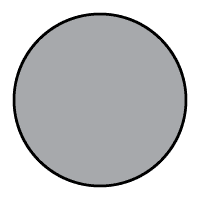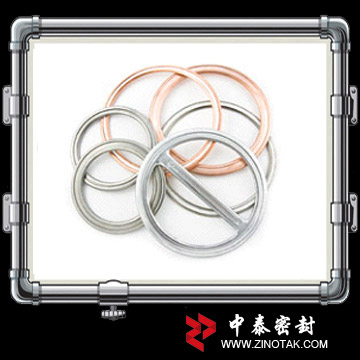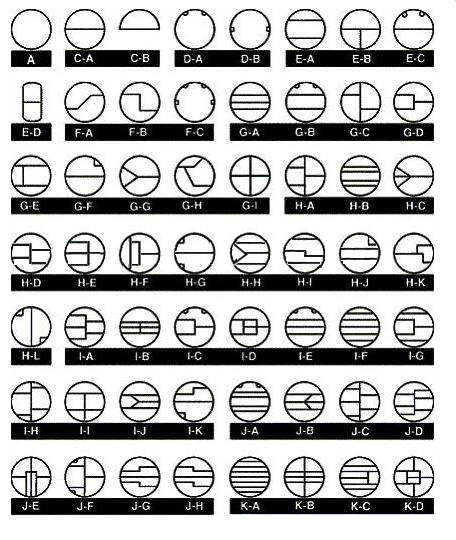|
ZT-G701
Double-jacketed gaskets are probably the most commonly used style of gaskets in heat exchanger applications. They are available in virtually any material that is commercially available in 26-gauge sheet. They are also extensively used in standard flanges where the service is not critical. Since most double-jacketed gaskets are custom made, there is virtually no limit to size, shape or configuration in which these gaskets can be made. In some cases nubbins are provided on heat exchanger designs to provide an intermediate seal. This nubbin is normally 1/64" high by 1/8" wide. Experience has indicated, however, that there is little advantage to this particular design. The primary seal is still dependent on the inner lap of the gasket doing the brute work and the secondary seal, when applicable, would be provided by the outer lap. |

|
|
ZT-G702
The double-jacketed corrugated gasket is an improvement on a plain jacketed gasket in that the corrugations on the gasket will provide an additional labyrinth seal. It also provides the advantage of reducing the contact area of the gasket, enhancing its compressive characteristics. A double-jacketed corrugated gasket still relies on the primary seal on the inner lap. |

|
|
ZT-G703
Flat metal gaskets are best suited for applications such as valve bonnets, ammonia fittings, heat exchangers, hydraulic presses, tongue-and-groove joints. They can be used when compressibility is not required to compensate for flange surface finish, warpage or misalignment and where sufficient clamping force is available to seat the particular metal selected. They must be sealed by the flow of the gasket metal into the imperfections on the gasket seating surfaces of the flange. This requires heavy compressive forces. The hardness of gasket metal must be less than the hardness of the flanges to prevent damage to the gasket seating surface of the flange. |
 |
|
ZT-G704
The majority of applications for single-jacketed gaskets are normally 1/4" or less in radial width. This type of gasket is widely used in air tool applications and engine applications where space is limited, gasket seating surfaces are narrow and relatively low compressive forces are available for seating the gasket. |
 |
|
ZT-G705
In the single-jacketed overlap construction the maximum flange width is approximately 1/4". this type of gasket is used when total enclosure of the soft filler material is required and when the flange width makes it impractical to use a double-jacketed gasket. |

|
|
ZT-G706
The double-jacketed, double-shelled gasket is similar to the double-jacketed gasket except that instead of using a shell and a washer, two shells are used in the fabrication of the gasket. It has the advantage of a double lap at both the I.D. and the O.D. of the gasket, adding greater stability to the gasket. The construction will withstand higher compressive loads. Double-shell gaskets are normally restricted to use in high pressure applications. |

|
|
ZT-G707
Round cross section solid metal gaskets are used on specifically designed flanges grooved or othewise faced to accurately locate the gasket during assembly. These gaskets seal by a line contact which provides an initial high seating stress at low bolt loads. They are fabricated from wire formed to size and welded. The weld is then polished to the exact wire diameter. |
 |
 Do you want to know more about Zinotak?
Do you want to know more about Zinotak?










